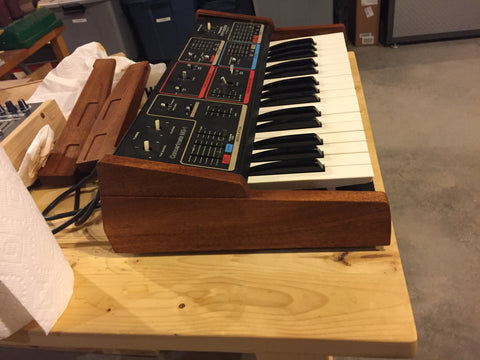I've made a bit more progress on the Moog Rogue / MG-1 panels. Despite their rather conservative looks, these are actually somewhat complicated end caps. Replacing molded plastic with wood presents several challenges, with thickness often becoming an issue. Wood needs a certain thickness to maintain stability and rigidity. As a result, simply producing a 3D copy of the original panel doesn't suffice.
For example, these Moog panels feature interior cutouts and side overhangs that leave a small sliver of plastic on the originals. In order to achieve this in wood, you've got to make things either thicker, or shorter in one dimension, or both. Often, the most logical solution is to make the side panel thicker. But, if not careful, the result is the dreaded 'slabs of 2x4's nailed to the side look.'
So, what's the solution? I think it's exterior details. Reproducing the original reliefs, decorative angles, and cutouts draws the eye away from the increased thickness. Preserving these highlights from the design does more than just pay homage to the original. It creates a familiar sense of space and dimension that accommodates the additional thickness.
My first prototypes for the MG-1 were flat on the sides...which looked ok...but something was wrong. I left it alone for a couple of weeks...sitting in the corner of the shop. I finally decided to return to the 3d CAD modeling and add in the external details. Magic happened. Suddenly panels that were 1/4" thicker looked slim and sleek. And, they're are instantly recognizable. I can't wait until these are done!



